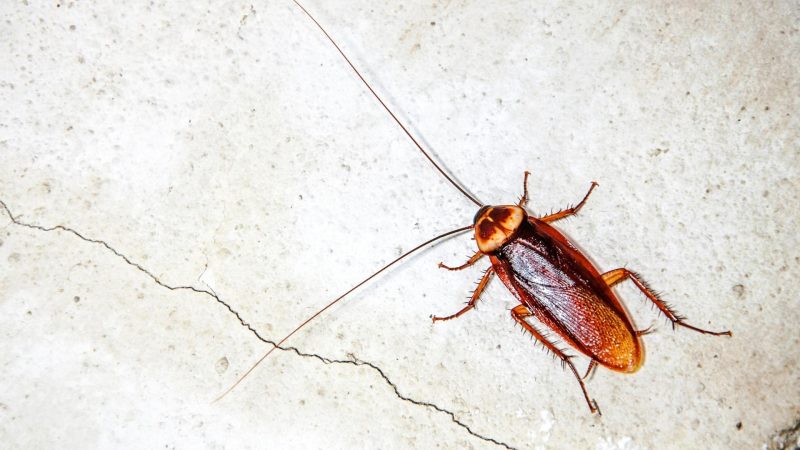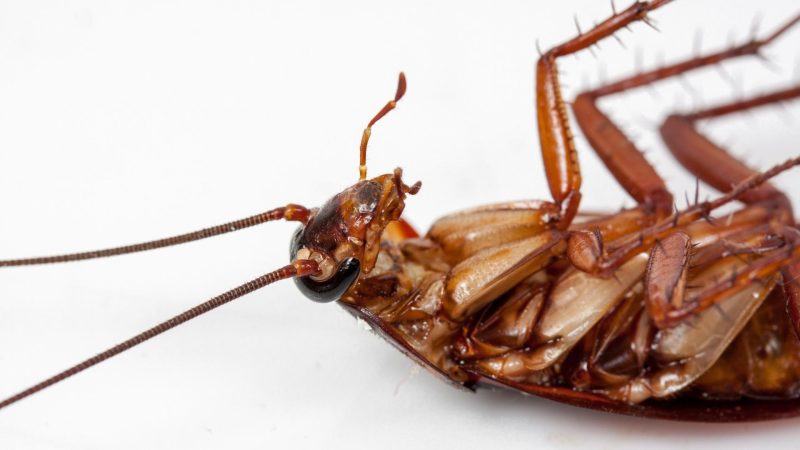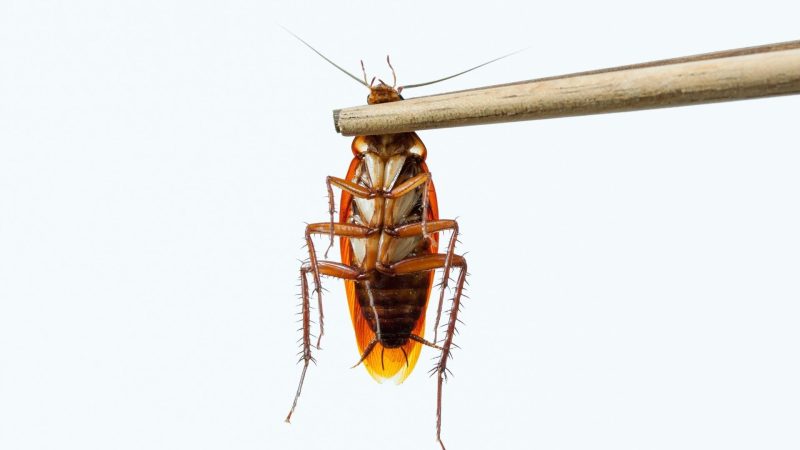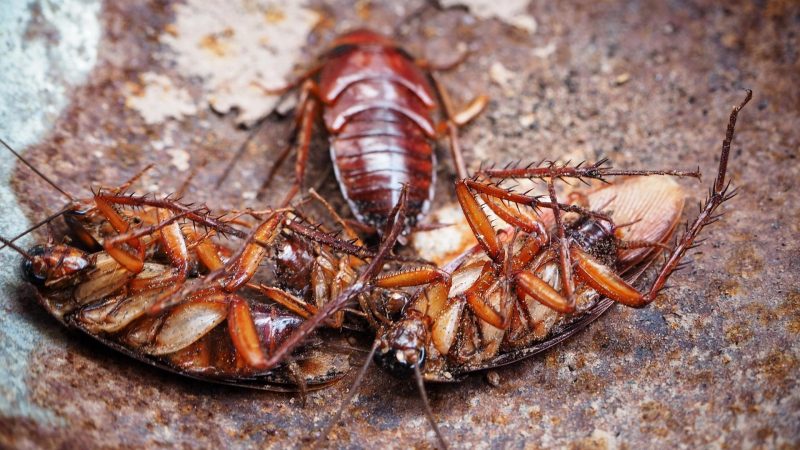Cockroaches are one of the biggest problems in households all around the world. Most species can be found indoors, but some species live only outdoors. One method for getting rid of them is to smash them. However, keep in mind that a cockroach may live without its head.
How long can a cockroach live without its head? A cockroach can live without its head depending on many factors. It can be from several hours up to one month. A cockroach cannot detect movement without its head and antennae, hence it is readily detected by predators. That is why they can only last a few days.
In this article, we’ll discuss the head analogy and morphology of a cockroach, as well as the factors that can affect a cockroach’s survival without its head.
What Is Cockroach?

A cockroach is light to dark brown in color, depending on its species. Some species have long, and some species have short wings. But most of them do not fly. With global warming and higher temperatures, it’s more often to see a flying cockroach.
Most species can be found indoors, but some species live outdoors. All cockroaches are nocturnal insects, which means that they are active only at night. If you find a cockroach in daylight, there is a high probability of infestation.
Cockroaches love to hide in tight, dark, warm places. They eat everything humans eat. So, they can be found in houses (especially kitchens and basements), garbage cans, restaurants, and hotels. Furthermore, they can carry diseases, and for that matter, they can be very dangerous. They can cause food poisoning, dysentery, allergies, asthma
Related: What Is a Cockroach? | Comprehensive Overview
Cockroach Head Anatomy and Morphology | Information

Since cockroach is an omnivores, their mouthparts are unspecialized and adapted for biting and chewing. Their head is small but composed of many parts.
The head capsule (epicranium) is hard sclerotized, and it encloses the mouthpart, brain, muscles, and attach antennae.
Several regions can be recognized on the head capsule:
- Compound eyes – Located on the dorsal edge of the head.
- Antennae – Located ventral to the eyes. They serve as sensors that locate movement and light around the cockroach.
- Epicranial suture – It is Y-shaped. The front of the capsule splits the head into 3 separate portions.
- Frons – Front of the capsule. It is the region of the capsule located between the two arms of the “Y”.
- Vertex – The region between two eyes.
- Cypelus – They are linked at the epicranial suture and are placed ventral to the frons. It is not movable.
- Labrum – It is connected to the ventral edge of the clypeus through its transverse, moveable articulation.
- Paired genae – These create the epicranium’s sides, or cheeks.
- Foramen magnum – Through which pass the gut, salivary ducts, and nerve cord.
- Cervix (neck) – Soft part of the head.
Cockroach’s head is attached to the rest of the body through the sclerotized structure called prothorax. The prothorax is like a shield that protects the cervix and the head.
Related: Do Cockroaches Play Dead? | Surprising Facts and Explanations
Can Cockroaches Live Without Their Heads?
Cockroaches can live without its head. They do not have blood pressure like Mammalia. So if they lose their head, there will not be blood loss. The blood will just be cloth at the spot where the head was previously attached.
Moreover, they can live long periods without food. If they eat for one day, they can live for up to one month without food if there is not much movement. But if they lose their head, they would just sit still.
Cockroaches do not need their head to breathe. The insects breathe through spiracles and transport oxygen directly to the cells via tubes known as the trachea. This way of breathing allows them to directly absorb oxygen in every tissue. They do not carry oxygen through the blood to tissues.
When they lose their head, the role of the brain is taken over by the terminal ganglion. Because of that, a headless cockroach can still stand and react to touch. They can move around and locate food sources, but they could not eat.
Female cockroaches can even provide a new generation without their head, but only if they already copulated with male cockroaches before they lose their head. Without the head, they can’t physically harm people, but they still can carry diseases. So, it would be best to properly stamp out headless cockroaches.
How Many Days a Cockroach Can Live Without Its Head?
If there are optimal conditions that imply cold temperature, humid air, and the absence of infectious agents such as mold, bacteria, and viruses, cockroaches can live for up to one month. In reality, however, a cockroach can only survive for a few days without its head before it dies due to environmental factors or being attacked by parasites and predators.
Losing the head opens the spot for many parasites to enter their way into the cockroach’s body and kill the cockroach with their toxins. Also, without the head and antennae, a cockroach can not locate the movement, so they are easily found by predators. High temperature and dry air are harmful because it helps internal organs to dry faster. So in the absence of water, the organism dies.
Does a Cockroach Live if It Has the Head Only?

Even if only the head is present, the cockroach can still move its antennae and eyes for several hours. But for a cockroach to live, one of the most important factors is food. With only the head, there is no digestive system to digest food, and there is no vascular system to translocate food to all the cells in the organism. So if cockroaches have only one head, they can live until they spend all food supplies in their cells.
Can Cockroaches Grow Their Heads Back?
Many studies are proving a cockroach can regrow body parts. For regrowing to happen, the existence of hormones is necessary. A cockroach’s legs may regrow due to hormones. It is even easier for a cockroach nymph to regrow body parts since the nymph organism is younger and more resilient.
However, all the hormones are produced in a cockroach’s head. So, the body does not have the main component for regrowing to happen without its head.
On the other hand, if the head is still alive, a cockroach cannot regrow the main body from the head. Technically, the hormones are there, but as we previously said, the head of a cockroach can only live for a few hours. Thus, there is not enough time for the body to regrow.
Do Cockroaches Eat the Head of Other Dead Roaches?

Cockroaches are omnivores. That means they have similar eating habits to humans. They like to eat food we like to eat, but also they like to eat garbage humans make.
But when it comes to poor choice of food, cockroaches will eat anything that comes in their way. So when there is nothing else to eat, they can start to eat other insects. They can even start to behave like cannibals and eat dead individuals of their kind.
In extreme conditions, they will start to eat live cockroach nymphs or grown cockroaches that are smaller than themselves. Also, they can even start eating their feces. But at that point, there is a big possibility that they will die from starvation.
Summary
Cockroaches have unique anatomy and physiology. Because of this, even if their head is cut, they can still survive. The body can survive without the head for several hours to a month. Their body’s survival depends on environmental conditions, the amount of food and water consumed before the cockroach loses its head and predators and parasites that threaten it.
Cockroaches can regenerate some of their body parts, such as their legs, but they require hormones to do it. Hormones are located in their head. So if they lose their head, there is no way they can regrow their head back.
List of Sources
Jacobs, S. (2017). American Cockroaches. PennState Extension.
Fox, R. (2006). American Cockroach. Lander University.
Sutherland, A. M., Dong-Hwan, C., Rust, M. K. (2019). Cockroaches. University of California Agriculture & Natural Resources.
- Bed Bug Surge 2025: How to Detect, Prevent, and Safely Eliminate Infestations in Top U.S. Cities - June 18, 2025
- Asian Needle Ants Invade US Homes: 2025 Guide to Identification, Risks, and Effective Control - June 11, 2025
- New World Screwworm Alert: How US Livestock Owners Can Prevent Outbreaks and Protect Herds [Summer 2025 Update] - June 8, 2025
